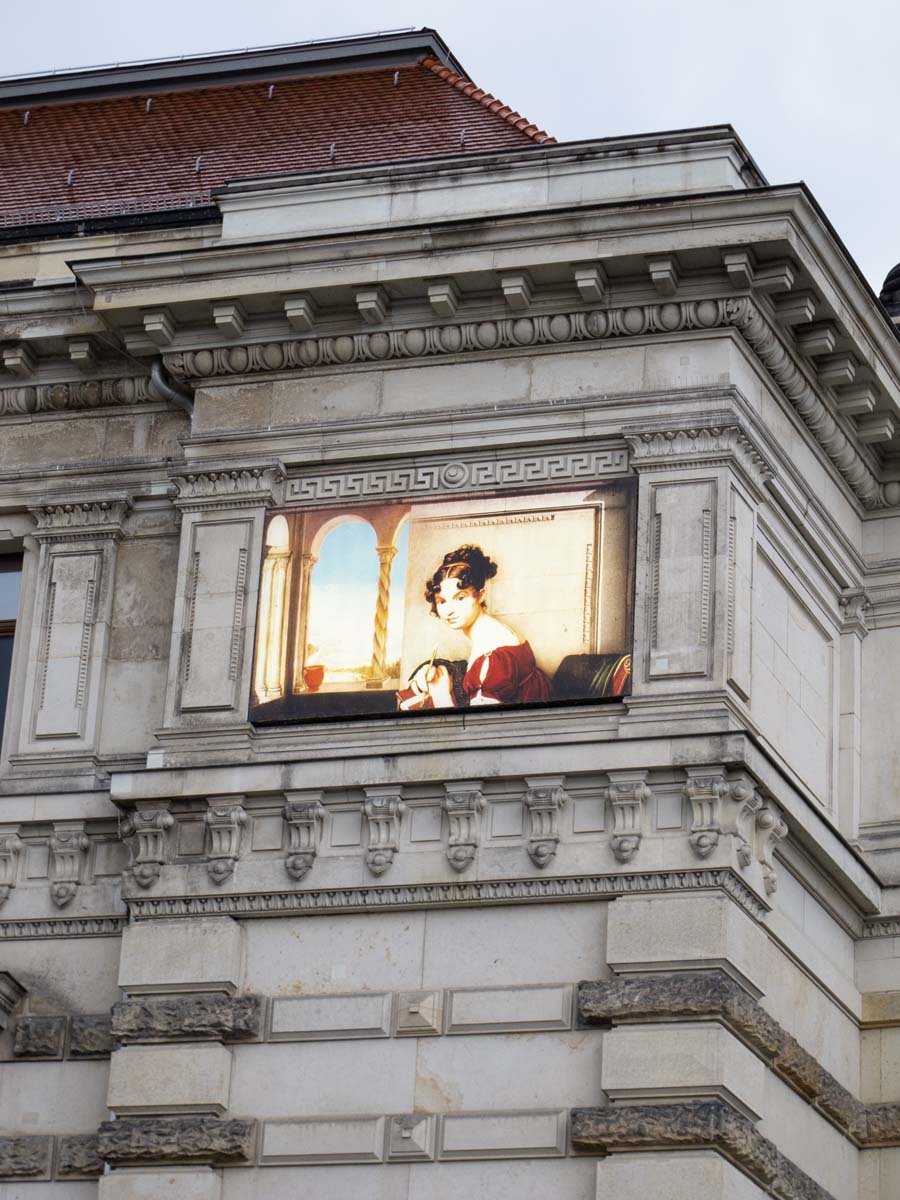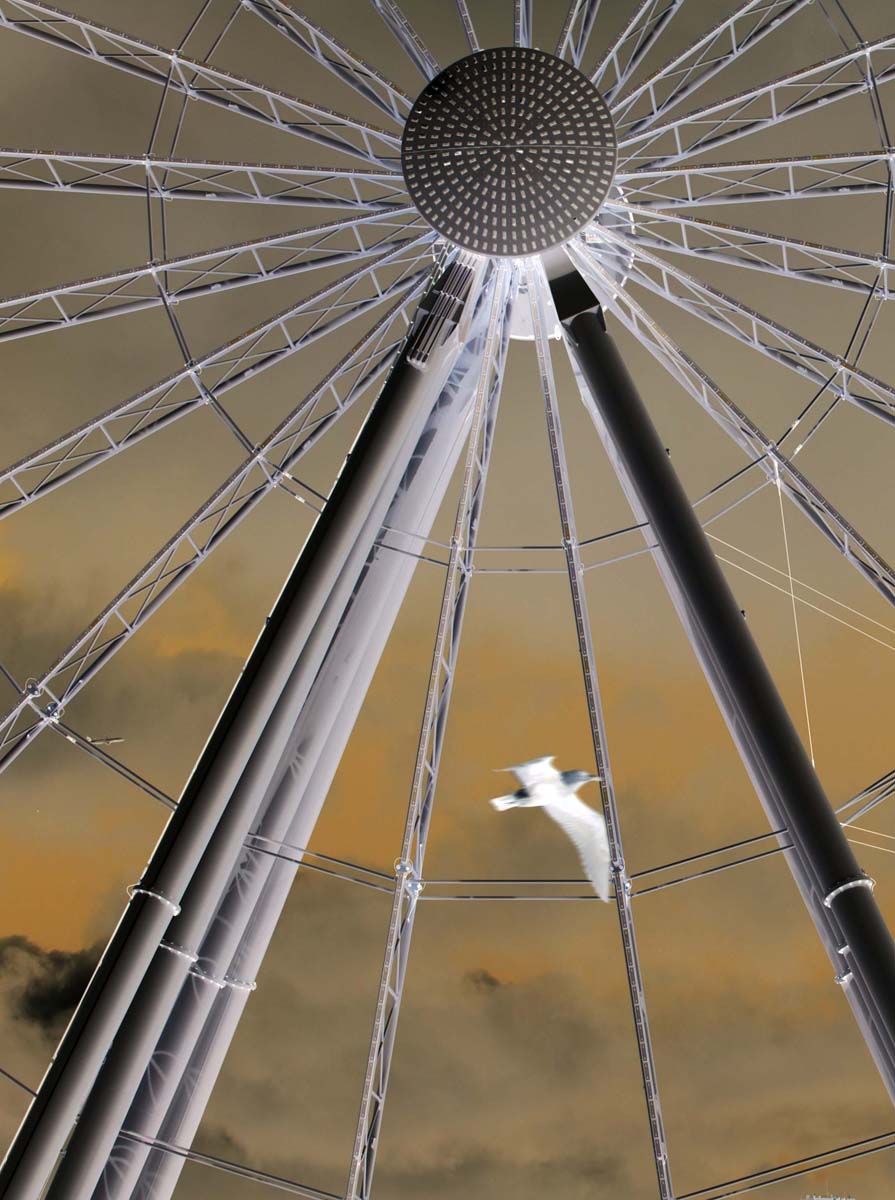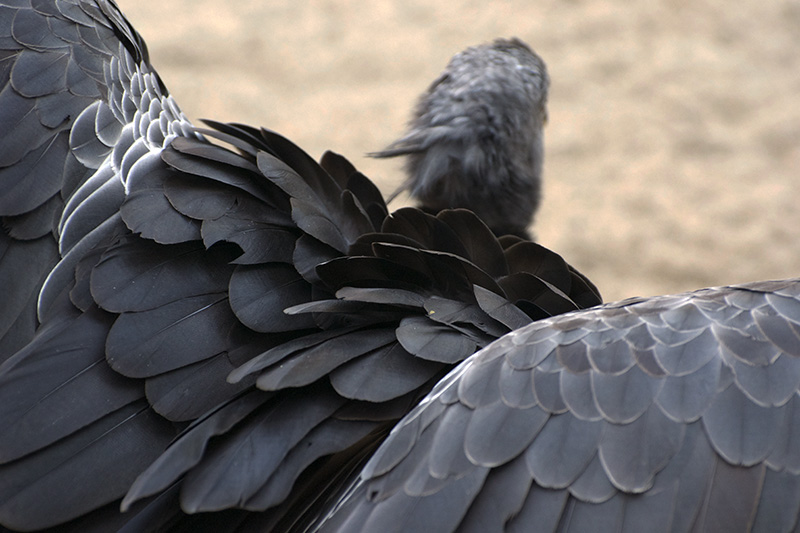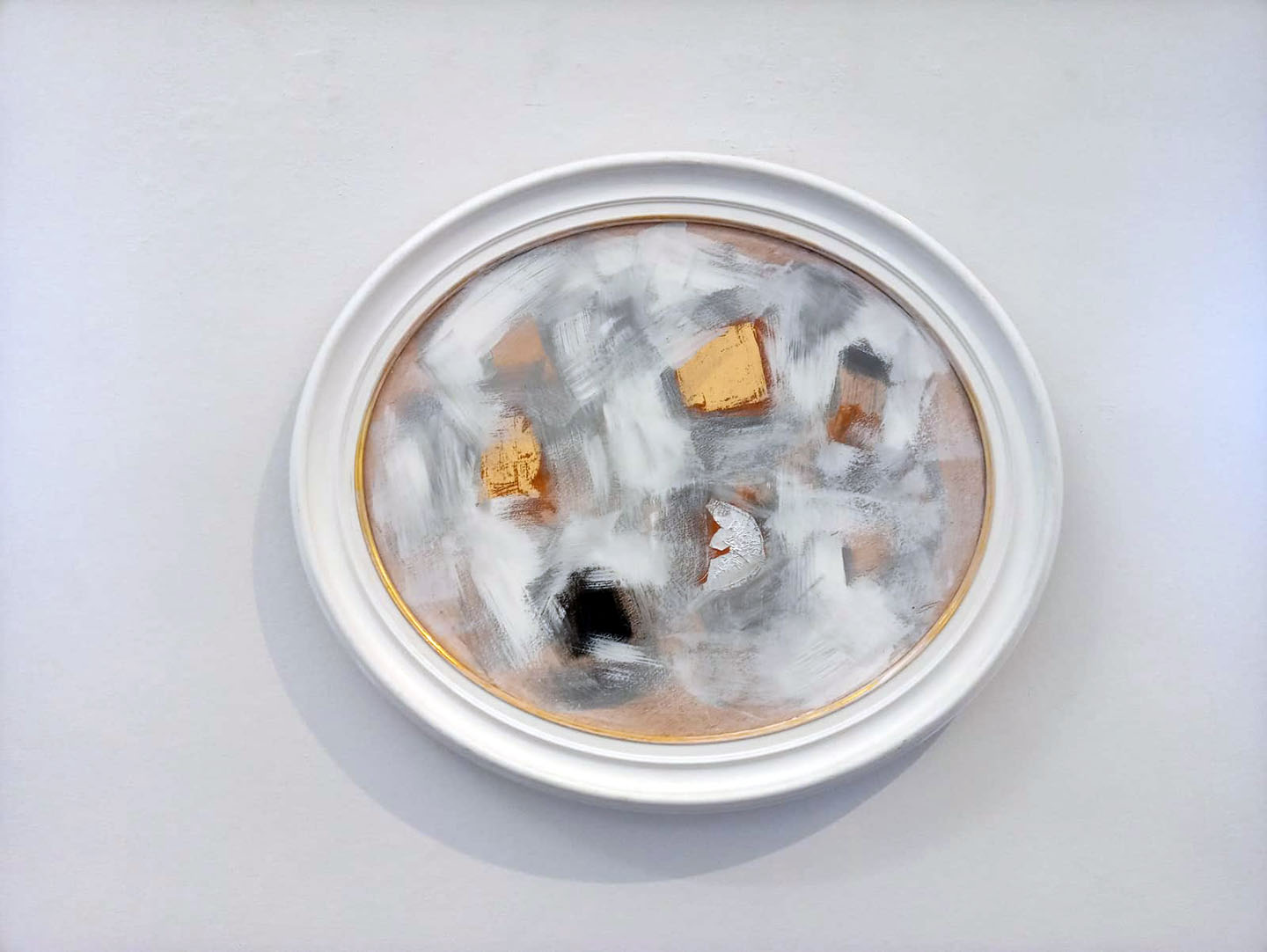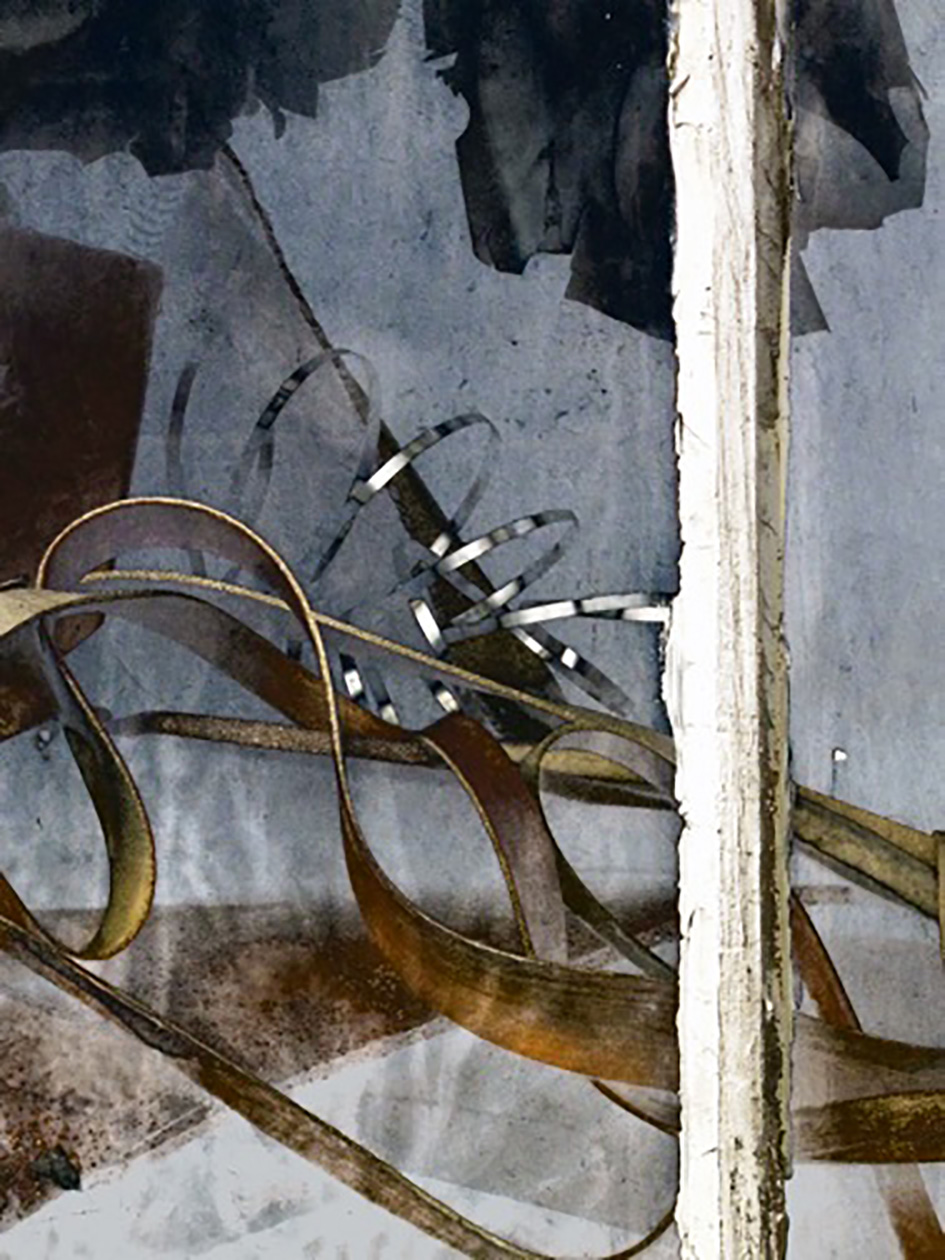
Last night I had a horrid dream, likely tied to the day’s reading and writing about Caspar David Friedrich. Emotionally depleted from curating a show of Holocaust photography at a German Jewish museum, I took the wrong train, ending up traveling through Poland. Once we reached the Baltic Sea shore, the train stopped. Throngs of people, me among them, scrambled down the dunes and cliffs to the beach to see Orcas (! they live in all oceans except the Black and the Baltic Sea…) swimming in what looked like jet-black, glassy waves that were suspended in slow motion. Friedrich’s Sea of Ice had melted, but the water was not behaving naturally. I could not really see much given the wall of people, all with their back turned to me and then realized I had left my backpack, wallet and iPhone as well as my heavy coat in the train – what if it left? You can anticipate the rest – trying to scramble up the cliffs, heart pounding, stone crumbling under your feet…
My former hometown museum, Hamburger Kunsthalle, currently offers a blockbuster retrospective of works by Caspar David Friedrich. By all reports it is a curatorial masterpiece, guiding you through the evolution of the work by this preeminent romanticist painter, while the drawings and paintings are simultaneously grouped by thematic content, making for a more comprehensive visual experience. A whale of a show where you can see nothing on opening night because of the masses of visitors celebrating the occasion.
The cherry on top can be found on the second floor of the museum – a selection of contemporary artists whose work references, or is derived from, or parodies Friedrich.

I’d give an arm and a leg to see it, but my days of travel to Europe are over. Luckily we can get some glimpses on-line. Here is a general tour of the exhibition. And here is an audio tour for selected works – the second entry from top in the link is the english version. One below that is one for children, which I find an extremely cool idea.
Alas, nothing visually available in my cursory search on the modern artists who relate to Friedrich. But here is a recent review that goes into more depth.


Concurrent with the exhibition, a darling of Germany’s current literary scene, author and art historian Florian Illies, published a book about Caspar David Friedrich (CDF), Der Zauber der Stille – Caspar David Friedrichs Reise durch die Zeiten (The Enchantment of Silence, CDF’s travels through time – not yet translated.) I am halfway through it and must say it provokes a lot of different reactions.
For one, I have certainly lost my ability to concentrate across the years of the pandemic. Maybe it is just aging, maybe it is the lack of conversational interaction, or the stress levels that impede sustained reading. If the structure of a book is complicated I often get lost and/or frustrated. Well, this book does have a complex structure, but it held my attention by the sheer force of curiosity it instilled: where is the author going next? What seemingly unrelated bits of knowledge will be imparted in unexpected juxtapositions?


Like one of his successful previous books, Love in a Time of Hate: Art and Passion in the Shadow of War, 1929-39, which described the fates of numerous famous couples during the ascent of fascism in Europe, drawing relevant parallels to our own times, the new book is an accumulation of vignettes which constantly shift between times and perspectives. The book is divided in chapters referencing fire, water, earth and air as elements relevant to both life and work of CDF. A very helpful time table is in the appendix, as are recommendations for further writings by specialists on the topic. It is a book that helps you learn, without sacrificing amusement.

Reconstructed Frauenkirche that was destroyed in the allied fire bombing
If you ignore the somewhat self-congratulatory tone of an author who knows how clever he is, and his insistent descriptions of what and how Caspar David Friedrich thought and felt – a bit too presumptuous for my taste – you are in for a ride that elates. You learn so much about the artist, his times, the trauma that defined his development, the strange interactions with women (he decided he needed to be married in his mid-forties when the neighbor who kept his wood stove going while the artist went on his daily hikes, went on vacation. He asked for the hand of a 20+ year younger woman, who he had encountered in the store where he bought his art materials, and could not even remember her first name during the 2 year-long engagement…)

The kind of house CDF likely rented an apartment in.
Florian Illies is a quintessential story teller, and weaves tales that help us understand an artist whose rebirth into public consciousness, after long eras of almost complete obsoleteness, is no coincidence. Then and now a longing for something that juxtaposes or lifts the despair du jour was pretty central to people’s existence, and his work captured that longing (and its potential remedies) in ways not seen before.





But the author also makes us think about historical interconnections, often occurring by chance. For example, Walt Disney, during trips to Europe, collected art books galore and shipped them back to the US. When he was told by Thomas Mann, while both received an honorary doctorate at Harvard or some such, that Felix Salten’s tale Bambi would be a great script for a movie, Disney promptly acted on the suggestion and told his artists to use the CD Friedrich landscapes from the art books as the background for the movie. Hitler, a Disney fan, adored the movie. Never mind, that Felix Salten’s book, written by this Jewish author and perceived to be a cloaked substitute for Jewish persecution, was one of the first to be publicly burned.




The Nazis later appropriated Friedrich’s oeuvre into their canon of true Germanic art, to the point where every young soldier sent to his death at the rapidly deteriorating Russian front received a booklet called Caspar David Friedrich and his Homeland, containing black and white prints of his paintings of oaks and the sea. The introduction contained the assertion that the artist carried a life-long, unmovable, holy belief in Germany.


View of Dresden from the surrounding hills
Anecdote after anecdote, one art-history related morsel after another. The extreme colors of the sky, reminiscent of those of his contemporary Turner? Why, Mount Tambora, a volcano on Sumbawa Island, now Indonesia, erupted in 1815, and ash particles that traveled across the world had an impact on how colors in the atmosphere were perceived. The theme of fire and ash replicates itself through out Friedrich’s life. So many of his works lost to fire, so many of the places he was connected to, burned.
The landscapes all constructed, rather than true life depictions, painted in a darkened basement room, fixed with the famous backside views of wanderers and women because the artist felt he could not draw people correctly, the back view being a welcome simplification. On and on it goes, deflating myths, augmenting admiration for a man who struggled with life-long depression, pathological shyness and poverty.


The river Elbe that crosses the city, where he walked during dawn and dusk, every day.
Until you have a chance to read it in English, here is some compensation for the wait: here is a link to a website that has accumulated titles of books that have a truly interesting or innovative structure. I can highly recommend Life after Life and The Warmth of other Suns.
Photographs today are from Dresden, where the artist lived his adult life.

Music today by Carl Maria von Weber, musical champion of the ideals of Romaticism. He overlapped with CDF in Dresden, where he became the director of the German Opera in 1817 and where he wrote the Freischütz. I selected an earlier composition, a beautiful piece for clarinet, though.
